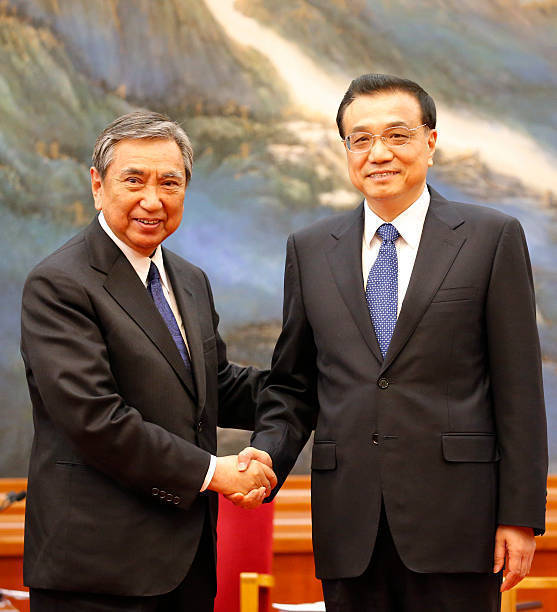The following is from an article by Masamune Wada, a member of the House of Councilors, published by Hanada Plus.
The first answer in the history of the Diet! Foreign Minister Hayashi says, "There is no document within the ministry that serves as the basis for the Nanjing Incident."
"The Japanese government cannot deny that noncombatants were killed after the Japanese army entered Nanjing." When I asked him about the basis for this view, he answered for the first time in the history of the Diet.
table of contents
● Is there a document that serves as the basis for the statements made by the government as a whole?
● Close resemblance to the Kono statement on the comfort women issue
● Some statements in the Murayama Statement were written without basis.
● "If you can't define it, you should delete it."
Is there a document that serves as the basis for the statement by the government as a whole?
At a House of Councilors Accounts Committee session last week, when I asked about the grounds for the Japanese government's views on the Battle of Nanking, I received an answer for the first time in the history of the Diet.
Documents that serve as the basis for the government's statement on the Ministry of Foreign Affairs website, etc., that "the Japanese government cannot deny that noncombatants were killed after the Japanese army entered Nanjing." Foreign Minister Yoshimasa Hayashi replied, "I cannot confirm the one created by the Ministry of Foreign Affairs."
The issue of the government's view on the Battle of Nanjing came to light when Kenichi ARA, a researcher on modern and contemporary history, asked the Ministry of Foreign Affairs to release the documents on which it was based last March and received a response January of this year stating that it had decided not to disclose the papers because it could not confirm the existence of the relevant documents.
When Mr. ARA asked me if it was possible to correct a statement on the Ministry of Foreign Affairs website that had no basis, I began communicating the facts with the Ministry of Foreign Affairs.
The Ministry of Foreign Affairs indicated that there was no document within the Ministry of Foreign Affairs that could serve as the basis for the statement, which was officially confirmed during the parliamentary questioning this time.
In this deliberation, after obtaining an answer as to whether or not the document exists within the Ministry of Foreign Affairs, I asked the government as a whole whether any papers would serve as the basis for the statements. But not only did he answer, "No," for some reason, Minister of Foreign Affairs Hayashi also responded to the question, which I planned for the next question, "Does the entire government have documents that serve as the basis for the statements?"
The response was, "The description on the Ministry of Foreign Affairs website, which you just pointed out, is the government's response to the questionnaire decided by the Cabinet on April 24, 2007. However, the recognition shown in the same answer is a comprehensive judgment based on the testimonies of those involved and various materials related to the incident.
Regarding this document, we have not been able to confirm that the Ministry of Foreign Affairs created it, but as a document created by a government agency, it was published in 1975 by the Defense Research Institute, War History Office. I am aware that there is a corresponding description in the first volume of the War History Series: Chinese Incident Army Operation."
Close resemblance to the Kono statement on the comfort women issue
However, the "War History Series: Chinese Incident Army Operation" in this answer was compiled in 1975, 30 years after the end of the war. I ordered all of them from the National Diet Library and read them all. Still, I could not find a clear description from these materials that the Japanese military intentionally killed civilians.
In addition, the "applicable description" in the Foreign Minister's answer seems to be the description that "innocent residents were killed or injured," but this may be written in the context of the Japanese military intentionally killing residents. Instead, it is written on the premise that "noncombatants and residents died as collateral damage." Furthermore, in this "War History Series: Chinese Incident Army Operation," it is clearly stated that "Most of the corpses near Nanjing were the result of combat actions, and it is difficult to say that it was a premeditated and systematic massacre."
What can be said from these is that the government's view on the Battle of Nanking is an "official view" based on things that cannot be confirmed in government-owned documents and are very similar to the statement by Chief Cabinet Secretary Kono on the comfort women issue.
The description on the Ministry of Foreign Affairs website is based on the description of the government's reply to the questionnaire in 2007, "It cannot be denied that noncombatants were killed after the former Japanese army entered Nanjing in 1937." However, what became clear through this question-and-answer session was that no document in the Ministry of Foreign Affairs served as the basis for this and that even in the "War History Series: China Incident Army Operation," which is the basis for this, there was no intentional non-combat. Therefore, the killing of members and residents is not specified.
This post continues.
















